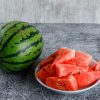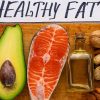
Is milk bad for you? Can it affect your health negatively? Well, as per the common knowledge people have, calcium means strong bones and helps us build muscle, right? Of course, yes!
But we hope that you know that there are other sources of calcium than milk. Are you wondering why we are saying this? Well, that’s because milk actually has harmful effects on our health. Yes, you heard it right! People with chronic constipation, arthritis, and allergies have had their condition disappear when they stop eating dairy.
Want to know how and why is dairy bad for you? If yes, then keep reading as we are going to talk about the most common dairy health concerns.
1. Low-Quality Forage
If one of the questions that come to your mind is “why is milk bad for you”, then know that one of the reasons for it is low-quality forage. You should know that cattle feed can alter the health conditions of the cow and hence the milk. Cows are fed soy, corn, cottonseed meal, or commercial foods. These contain a lot of bad things and chicken manure, and pesticides are just two of them.
Cattle feed is an essential source of nutrients needed for milk production. It provides protein, energy, as well as fiber needed for cud chewing, rumination, and rumen health. Dairy farms need to think about how much and what quality of cattle feed they should use before deciding on the diet that they’re going to give to their cows. You should know that grains, proteins, and other supplements are added to cattle feed to provide the same nutritional value as fodder. So, if you think about “Is drinking milk bad for you”, know that it can be if low-quality fodder is used.
2. Pasteurization
Another reason why milk is bad for you is pasteurization. Pasteurizing milk means that the milk has been heated to a high enough temperature to kill specific bacteria and stop enzymes. But unfortunately, it destroys vitamins, denatures milk proteins, kills valuable bacteria, and encourages pathogens as well. You should know that calves that are fed pasteurized milk are not healthy and often die young.
Pasteurization was started in the 1920s to stop many diseases that happened due to dirty production methods, but now that production methods have been cleaned up pasteurization is no longer necessary.
Raw milk contains various things, such as delicate enzymes and probiotic bacteria. However, it often goes through a very high heat process which kills these nutrients. The result is lost vitamins and minerals and changes in flavor or texture. So, if you are still thinking about “is milk bad for you”, then you should know that milk with no nutrients might be bad for you.
3. Ultra-pasteurized (UHT)
Another reason why dairy is bad for you is ultra-pasteurization which is used to kill heat-resistant bacteria. It increases it’s shelf life but lowers its safeness. Yes, that’s true! Ultra-pasteurized milk goes from refrigerated (cold) to above boiling in less than two seconds. This has the same effects as regular pasteurization just on a higher level: fewer vitamins, more pathogens. UHT alters the taste of regular pasteurized milk and can lose up to 20% less folate, riboflavin, vitamin A, vitamin B12, vitamin C, and thiamin. So, if you are wondering about “Is milk bad for you”, then we’d say that ultra-pasteurized milk is bad for you.
4. Homogenized
Homogenization breaks down fat pieces, so they do not rise to the top. And you should know that this type is harder to digest. So, if you want to ask “is milk healthy” when it’s homogenized, then remember that it’s not.
When it is homogenized, then rather than proteins being digested in the stomach, they are broken down and absorbed into the bloodstream. These unusual proteins can cause the immune system to be inflamed. Homogenized milk has been known to increase your risk of heart disease. So, we hope you now understand why is dairy bad for you when it is homogenized.
Conclusion
We hope that this blog answered your question about “Is milk bad for you”. Remember that if you want to drink milk, rather than buying any milk, it is suggested to buy pure raw milk from grass-fed cows. Keep in mind that if you were thinking “are dairy products bad for you”, you should know that they are not always bad. The problem is not the milk, but rather the processing it goes through from cow to store.
Also Read
SAY NO TO THESE 7 MOST ADDICTIVE FOODS FOR A HEALTHIER YOU
UNCOVERING THE TRUTHS BEHIND COMMON HEALTH MYTHS
UNVEILING THE SURPRISING COCONUT WATER BENEFITS ON HEALTH
10 MIRACULOUS HEALTH BENEFITS OF POMEGRANATE
UNCOVERING 6 SURPRISING HEALTH BENEFITS OF WATERMELON




